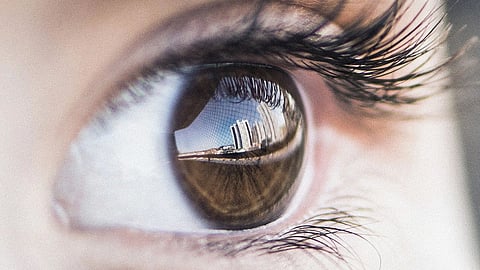“We showed that these eye movements aren’t random. They’re coordinated with what's happening in the virtual dream world of the mouse,” said Massimo Scanziani, PhD, senior author on the study, which appears in the Aug. 25, 2022, issue of Science.
“This work gives us a glimpse into the ongoing cognitive processes in the sleeping brain and at the same time solves a puzzle that’s triggered the curiosity of scientists for decades,” he said.
Connecting Eye Movement with Dream Direction
In the second half of the 20th century, some experts hypothesized that these REM movements may be following scenes in the dream world, but there was little way to test it, and the experiments that could be done (noting a dreamers’ eye direction and then waking them up to ask where they were looking in the dream) provided contradictory results. Many researchers wrote off REM movements as random actions, perhaps to keep the eyelids lubricated.


